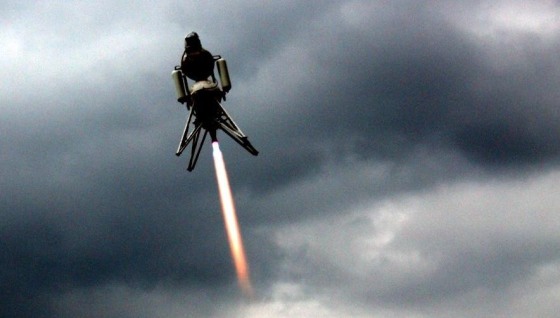NASA says it's awarding about $475,000 to two of the pioneers of the suborbital spaceship business — Texas-based Armadillo Aerospace and California-based Masten Space Systems — for test flights that will approach the edge of outer space. Those two companies have already won $2 million ofNASA's money between them, prizes that were offered in the Northrop Grumman Lunar Lander Challenge. But today's announcement signals that the space agency is open to giving the new guys some real business. Both companies are already deeply involved in the space business. Armadillo, for example, provides the rocket engines for the Rocket Racing League's X-Racer planes, is working on a suborbital spaceship for tourists, and plays a supporting role in the "Project M" plan to send a robonaut to the moon. Masten is partnering with XCOR Aerospace, one of its neighbors in Mojave, Calif., to develop landers that can go anyplace NASA might want to visit. NASA already spends millions of dollars a year to launch suborbital research rockets, but the rocket-powered vehicles involved in this new program would be reusable rather than expendable. Some space entrepreneurs and researchers hope that suborbital research could become the "killer app" for new breeds of low-cost launch vehicles. The NASA program that would be paying out the money for Armadillo's and Masten's services over the fall and winter is aptly named the Commercial Reusable Suborbital Research program, or CRuSR for short. The $475,000 is being set aside to fund three flights of Armadillo's Super-Mod vehicle, starting with a 9-mile-high trip and rising to a maximum altitude of 25 miles; and four flights by Masten's Xaero vehicle, ranging from 3 to 18 miles in altitude. These aren't technically spaceflights, because they don't rise to the internationally recognized boundary of 62 miles (100 kilometers). Instead, the flights will test the vehicles' ability to reach "near-space" at an affordable cost with easy recovery of payloads. ADS-B radio antennas will be installed on the vehicles to broadcast their position and other telemetry during the test flights. This NASA news release provides the details, including a quote from NASA Chief Technologist Bobby Braun: "These two awards are just the beginning of an innovative teaming relationship with industry to provide affordable access to the edge of space while evaluating the microgravity environment for future science and technology experiments. CRuSR represents the sort of government-commercial partnership that will facilitate near-space access at affordable costs." Is this the start of something big? Or has something big already started? For example, NASA has already awarded $3.7 million to Blue Origin, the space venture that's backed by Amazon.com founder Jeff Bezos, for work on components that could be used on future orbital vehicles. What giant leaps — or giant missteps — might lie ahead for the space agency and space entrepreneurs? Feel free to add your opinion in the comment section below.
NASA funds suborbital cruisers
